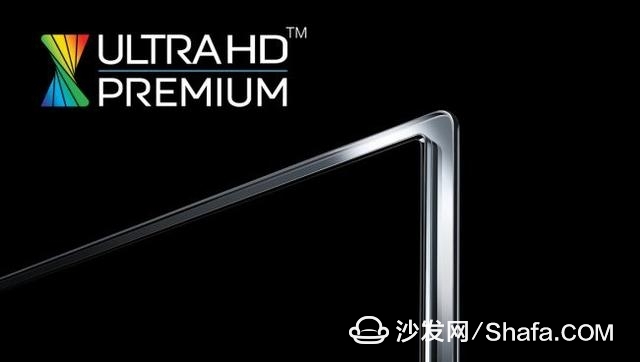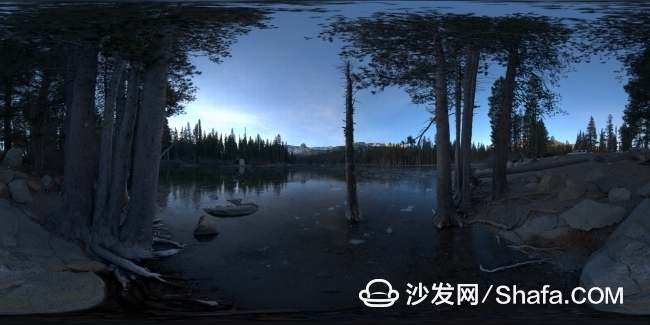With regard to the future of television, 4K has become the focus of attention. HDR may bring a big leap forward in the quality of the image, and we are looking forward to a long-term leap forward. The UHD Alliance has incorporated HDR into the UHD Premium standard. If manufacturers want to put UHD Premium tags on their devices, they must add HDR technology.
What hardware manufacturers are concerned about is not limited to HDR. Filmmakers and TV broadcasters must first create content in HDR before they can provide technology to viewers. Compared with other technologies, HDR is more likely to revolutionize TV image quality.
What is HDR
The HDR camera has recently been added to the smartphone camera. Please be careful not to mix it with TV HDR. Both HDR images have better contrast between light and dark, but they work slightly differently.
High-end cameras and recently introduced smartphone apps have introduced HDR technology, taking multiple photos at a time and then combining them into one. During the process, photos were taken under different exposure conditions. There will be a stop point, and the amount of light from one stop point to another will double. The first stop point produces a very dark image, the last point produces an extremely bright image, and the final composite picture is even better.
Video is not the case. Yann Lafargue, head of Netflix's corporate communications, said in an interview: “HDR is a new standard for home entertainment. It is a big leap in color, contrast and brightness. It and surround sound, HD and 4K. Just as important, HDR offers a new set of tools that we can use to create brighter, more colorful scenes, and at the same time, the details will be richer in dark scenes."
Although the HDR and HDR video names are the same, the two have some in common, but the difference is still very large. The contrast between the brightest and darkest areas is enhanced, which is a common denominator of the two. The difference is that HDR photography combines a single picture, and video HDR uses the better camera technology to shoot the movie from the very beginning.
The end result is that the picture has a darker black, brighter white, and the entire picture is more detailed. Under the standard display, the black below the specified brightness is the same depth, but the HDR display has a wider range, and even the dark black and black can see the difference. For example, at night with a wide-angle shot of a bonfire, HDR can take the details of the flame without overexposure; at the edge of the flame is a dark environment, the object is just visible, and HDR can determine the target well.
Panasonic training manager Michael Price said: "HDR is related to control, not just the increase of brightness. In the end it can present light and shadow more naturally."
Hollywood videographer Vanja Cernjul praised HDR. He believes that HDR has added highlight details and the entire composite image has been affected. He also said: "Is it a highlight or a shadow exposure? I need to make a choice. It is not necessary now. I will shoot the light when I shoot, because I can adjust the HDR level." During post-production, Vanja Cernjul will change Exposure, brightness, contrast, and color saturation levels make the image look as good as possible on an HDR-compatible screen.
Vanja Cernjul believes that filmmakers will be attracted to HDR television. Vanja Cernjul has just finished shooting the second season of "Marco Polo". The TV is shot in HDR. He also believes that the streaming service is suitable for providing HDR video because there are many original dramas commissioned by enterprises such as Netflix and Amazon.
HDR brings the distance between the media and the user's eyes closer and provides a more realistic image.
To sum up: HDR TVs and content can display a more realistic range of colors with a wider contrast, making the black part of the image appear closer to "real" black.
How does HDR look
Vanja Cernjul made a short film for Panasonic, from which he can see the potential of HDR. HDR can display dark and highlight details at the same time. After reading, you will find that the standard image is a bit flat and difficult to satisfy.
When we shift from SD to HD, the screen size is still very small. We only need to increase the number of pixels to convert it to a suitable image. Now that the screen is very large, if we simply increase the number of pixels is not enough, the image still has Other things that can be improved. HDR can add extra color to the image, improve the dark part of the sharpness, rich details of the highlights, HDR can bring more satisfactory images than simply increase the pixels.
Of course, HDR technology is not mature enough. From the evaluation results of some early HDR televisions, there are still some problems with HDR. For example, if the background is black, the target is bright, light stripes will appear on the screen, or the target Halo around.
In LG's OLED TV, this problem is not so serious, because each pixel of the OLED screen can emit light, and can be completely black.
How to get HDR?
HDR is a high-end technology. From production to distribution to the home screen, each step needs to be compatible with HDR. In simple terms, traditional TVs cannot display HDR images.
When you buy a TV, you may notice that some TVs have the Ultra HD Premium Logo. The icon tells us that the device supports HDR. In terms of specifications, the resolution of the screen must reach 3840x2160 (no different from other UHD screens), and there is also a need to display a large number of unique color hues - the tones in the picture.
There are other technical requirements for the Premium panel: the contrast must be at least 1000 lumens, and the black level is less than 0.95 lumens. Lumenis is a term that has been widely accepted by the television industry and represents the brightness of display screens. 1 lumens is equivalent to the brightness of a candle.
Most of today's TV displays have a brightness of 300 to 500 lumens, which is a good comparison to understand how high the HDR requirements are. The standard mentioned above is suitable for LED-backlit LCD screens. As for the OLED screen (lower brightness and lower black level), its brightness reaches 540 lumens and the black level is less than 0.0005 lumens.
Panasonic training manager Michael Price said that the contrast of the edge-lit LED screen is not high enough. If the dynamic range of the screen is to meet the requirements of the Premium HDR, a direct light source must be used—that is, light from behind the image. Panasonic launched only a Premium HDR TV, model TX-65DX902, priced at 3299 pounds (about 31,800 yuan). In fact, most LCD screens sold on the market do not meet the Premium requirements.
Manufacturers are not obligated to disclose the lumens and contrast of the screen. It is entirely up to the manufacturer to decide whether the non-Premium screen has sufficient brightness and contrast to provide a true HDR image. Similar results, different standards, consumer electronics industry has precedent, for example, the difference between HD-Ready and Full HD is very uncertain, conventional UHD and UHD Premium is not clear.
One thing is basic: If the label on the screen is HD instead of Ultra HD Premium, then the producers hope that the video TV we see will not be fully available.
In fact, no one forces companies to stick to UHD Premium labels, and some companies will put their own brands. "There is one thing that the Ultra HD Premium tag did not do: List all models that can receive HDR signals," said Sony product training expert Gavin McAllen.
Ultra HD Premium tags are also used on Ultra HD Blu-ray players and discs, as HDR is an integral part of the Ultra HD Blu-ray specification. Even if HDR is not supported, the UHD screen can be connected to an Ultra HD Blu-ray player that displays 4K images in SDR (Standard Dynamic Range), but it is only impossible to read the HDR metadata in the image. The Ultra HD Blu-ray player has a data transfer rate of 100 Mb/s, which is ideal for delivering HDR content.
The HDR standard is confusing
HDR10 content can be played on all HDR screens. The HDR10 specification is the same as the UHD Premium standard. The Ultra HD Blu-ray player must support HDR10, and the HDR content of Netflix and Amazon Streaming also supports HDR10.
Another reason why you should be careful when buying HDR screens is that content producers use several different HDR variants. Dolby supports Dolby Vison, which is a competitor to HDR10. Dolby Vison's color depth can reach 4000 lumens, which is much higher than current TVs.
Only Dolby Vison enhanced HDR content can be played on screens and players with Dolby Vison decoders. LG is a major equipment manufacturer and Vizio is also produced in the United States. Netflix, Amazon and several studios have accepted Dolby Vison, technology can be built into the Ultra HD Blu-ray player. The good news is that most Dolby Vison content also has HDR10 metadata. If your screen supports HDR, you can get an HDR experience.
Existing models cannot obtain Dolby Vision functionality through software upgrades. If you buy a TV that does not support Dolby Vision, it will never be supported in the future.
There will be at least 100 themes of Ultra HD Blu-ray Dolby Vision content on the market this year, including Sony Pictures, Universal, and MGM. There is currently no UHD Blu-ray platform that can decode Dolby Vision content, not even the products released.
The problem is not only that. Technicolor and Philips are working together to develop a system that can produce HDR and regular editions at the same time. Based on the screen's maximum brightness and dynamic range, the system can automatically select content. The BBC and Japan’s NHK are also working together to develop a broadcasting system that can transmit HDR and SDR content within the same signal.
Summarize HDR
HDR is definitely a symbol in home entertainment. With it, we have the same color effect as a movie theater when we watch movies at home. We can't wait to expect broadcasters to accept HDR early.
The impact of HDR on the movie is equally huge. In shadow and sunlight, the director no longer needs to choose exposure. Within a year or two, HDR may push Utrla UHD forward, and the problems caused by different standards will be solved.
There is no doubt that we have entered a new round of format wars and the reconciliation seems impossible.
Most of the hardware manufacturers support HDR10. Dolby is powerful and it has the support of content producers.
Simultaneous co-existence of the two standards is not impossible, take a look at Dolby and DTS, it is they parting the Blu-ray audio market. The safest option may be to outfit Dolby Vision because it is compatible with HDR10, but it is a pity that Dolby Vision cannot add functionality through firmware upgrades.
When does the HDR arrive?
If you are a member of Amazon Prime or Netflix, you can watch HDR content with an UHD Alliance-certified TV.
Ultra HD Blu-ray players support HDR, but there are not many discs on the market, let alone players. As more and more movies are released in the HDR version, it is estimated that HDR will soon become mainstream.
Netflix Lafarge said: "In August, Netflix has already increased its 100-hour HDR program, and it will add 150 hours before the end of the year. We have already announced that we will launch 12 movies and television shows."
If watching HDR content online, the bandwidth must be at least 25MB. Lafarge said: "If the speed is slow, you can reduce the resolution. We will retain the HDR viewing experience."
In other words, the experience that HDR brings is more important than resolution.
I-Pulse Feeder
I-Pulse Feeder, original and new or used one, in stock, high quality.
Material: Stainless steel
Feeder can be divided into tape feeder, tube feeder, tray feeder or stick feeder.
Feeder can be divided into original feeder and replacement feeder.
All the feeders shall be maintained during the use time
In addition, the following spare parts will be sold in our company.
SAMSUNG Feeder
SMT Feeder For Samsung
Panasonic Smt Feeder
Panasonic Feeder
Smt Machine Panasonic Feeder
Smt Feeder For Panasonic
Smt Feeder For Juki
JUKI Feeder
Juki Smt Feeder
Smt Machine Juki Feeder
I-pulse Feeder
I-Pulse Feeder,Smt I-Pulse Feeder,Smt Parts I-Pulse Feeder,I-Pulse Type Feeder
Shenzhen Srisung Technology Co.,Limited , https://www.sr-smts.com





